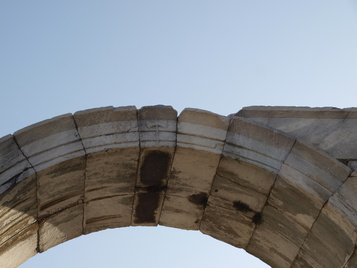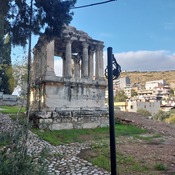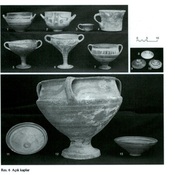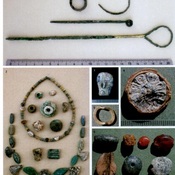The double axe gate is named after the double axe 'labrys' carved on the keystone of the archway. This gate was used as the northern gate of the city on the route where the Zeus Labrandos Festival took place in ancient times. The name of the gate comes from the double-faced ax relief on the above it. As A. Kizil noticed on both blades of the labrys are carved eyes which is according to him the Zeus's gaze towards Labraunda where is Zeus sanctuary.
See:
- George E. Bean, Turkey Beyond the Maeander. An Archaeological Guide, London Ernest Jersey 1971, p.31-44
- John Freely, The Western Shores of Turkey: Discovering the Aegean and Mediterranean Coasts, Tauris Parke Paperbacks, 2004, p. 214-215
- Abuzer Kızıl, Das Baltalı Kapı in Mylasa, die Labrys und die Augen des Zeus, Anatolia antiqua. Eski Anadolu Année 2009 17 pp. 255-264







